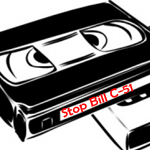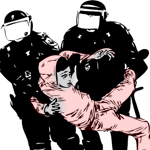How was the Canadian Security Intelligence Service created, and why?
There are two ways to tell this story.
The one we are most familiar with is from the side of the Canadian ruling class, and its state which created CSIS.
In this version, CSIS exists to protect all Canadians.
From exactly what we’re being protected is unclear. These days it seems its “lone wolf terrorists” or even the young men at the center of last year’s homicides in Ottawa and St‑Jean‑sur‑Richelieu.
Never mind that its a great stretch over real evidence to link these cases to actual terrorism.
There is also the story of CSIS from the perspective of the people’s forces.
This is also the history of struggle for protection — protection not by CSIS but protection from CSIS.
The Communist Party of Canada figures large in this history of political police in Canada.
Ever since our formation in 1921, the Communist Party has faced continued harassment from police and security forces.
The state crafted its modern outline of modern political policing this way.
Our party has always fought hard, united with other democratic forces, to over-come these attacks — and it’s been a victory for all people in Canada.
A long story
Despite the official rhetoric, mass suppression of civil rights and democratic freedoms has been a constant political factor from the origins of this country.
The military defeat of the Upper and Lower Canada rebellions; then the Métis resistance struggles which brought into life the North West Mounted Police, predecessor of the RCMP; the legal suppression of indigenous people’s resistance organizations; the War Measures Act; the mass interments of ethnic groups during the First and Second World Wars; relentless police attacks against the labour movement – all these illustrate the reality that from its very beginnings, the Canadian capitalist state has used the police, military, courts and spy agencies against its “enemies” and to contain oppressed national communities within the Canadian state.
The Communist Party was founded in conditions of illegality in 1921 as the War Measures Act was still in effect — several years after WWI ended.
A few years before, the Winnipeg General Strike had been suppressed brutally. Labour had few rights and strikes were regularly broken through force from the boss class.
Although the CPC won legality in 1924, it wasn’t long before another ban pushed our organization underground again.
Tim Buck, our Party’s long-time general secretary, and seven other Party leaders were arrested and imprisoned during the 1930s under the notorious Section 98 of the Criminal Code which outlawed so-called “subversive organizations.”
An attempt was even made to assassinate Buck in Kingston Penitentiary.
In a mass campaign, Buck was released and the party won back its status as an open contributor to Canadian political life.
But the new legal status was short lived.
Internment
When the CPC took the stance of initially opposing Canada’s participation in World War Two — correctly noting that the war began as a kind of phony posturing hoping that Hitler would invade the USSR — the Canadian government was the only Western power to respond by banning the CPC.
RCMP documents of the time show that the police view of the communists was that they were Canada’s biggest security risk — more serious than fascism because, the RCMP said, fascism was still a form of capitalism.
Party offices and meeting halls were closed; printing presses and other assets were seized, and our press and publications banned.
In Quebec the earlier Padlock law was implemented with reactionary swagger and used against ethnic communities like left-wing Jewish organizations.
Then, most disturbingly, labour leaders and Communists were interned at Petawawa and Kananaskis, and later blocked from joining the Canadian Armed Forces during the military struggle against Hitler fascism.
The internment had been anticipated by the mass arrest of left-wing Ukranians during World War I, and the so-called relief camps during the Depression where police rounded-up unemployed young men and sent them to work camps. It foreshadowed the mass racist interment of thousands of Japanese-Canadian citizens later on during the war.
These were dark moments in Canadian history. The Japanese internees received an apology and compensation in 1988, the Ukrainians in 2008. The Communist internees have never received either.
But they did win widespread public support which forced their release.
The loudest voice against this attack on civil rights was Dorise Nielsen, the third woman ever elected to parliament in Canada and a communist MP elected on a unity slate.
From World War II to the Cold war
In the meantime, the inevitable happened and Nazi Germany did invade the USSR, changing the content of the war.
While the USSR became ally of Canada, it took more campaigning before the interned labour leaders were released.
The period of the victory over fascism almost seventy years ago was a high point in popular progressive sentiment.
The experience of the Great Depression had made many skeptical of the economic system.
The War years had shown socialism in a positive light, and the human potential of a more planned economy.
The idea that Canada could do just as well in a democratic framework, with worker control, was very popular.
Equally broadly supported was the idea of peace and friendship with the socialist world, and not a third world war.
The then pro-socialist CCF party, predecessor of the NDP, saw its popularity rise.
So did the communists.
During this time, the Communist Party elected to provincial legislatures in Manitoba and Ontario, as well as Federally.
It has been said by some that this toe-hold into parliament was so dangerous it had to be eliminated.
With a unscrupulous defector from the Soviet embassy in Ottawa, the RCMP and government concocted evidence of a spy plot implicating a number of leading scientists and Fred Rose — Canada’s first openly elected communist Member of Parliament.
Never mind that the “secrets” had already been published in scientific journals and that such exchange of information was common place between the allies during the war.
Again, scores of people were rounded up under the Defense of Canada Regulations of the War Measures Act, held incommunicado for weeks on end, without legal counsel and barred from all contact with the outside world. Meanwhile, the Royal Commission issued a stream of press releases about the “Red menace”. Prisoners were forcefully told to incriminate themselves and others under the penalty of contempt of court.
Public outcry resulted, including the Emergency Committee for Civil Rights (with prominent members like professor C.B. Macpherson, physicist Leopold Infeld, and Group of Seven artist A.Y. Jackson which asserted that the Commission endangered “the basic rights of Canadians.”
Nevertheless, the Royal Commission began another era when Party and its activists suffered state-organized persecution for decades during what became known as the “Cold War” period.
The Cold War
Monitoring by the RCMP of included labour, women’s organizations like the Consumer Housewives Association, students, immigrant groups, and any other subversives or radicals suspected of being reds. This had already been exposed in the 1920s and 30s and continued in earnest during the Cold War.
These state-sponsored attacks on our Party were part of a broader assault on the trade union movement, as well as on activists in the peace, native and other progressive movements and organizations.
These actions are not speculation. The wrongful and illegal activities of the RCMP were documented and exposed by the MacDonald Royal Commission in the early 1980s because of public outrage over the RCMP’s activities — like barn burning in Quebec.
One of the most chilling examples of this was revealed not long ago, when the corporate media uncovered the PROFUNC plans.
PROFUNC
These were secret plans — unknown by most of parliament — for the RCMP to round up radicals across the country in the event of a third world war. The group was primarily made up of people deemed “prominent Communist functionaries” by an RCMP Security Service program known as Profunc
But the list always included more than just reds.
Although this ‘internment plan’ specifically targeted Communists and their families, it represented a flagrant disregard for the civil and human rights of Canadians as a whole.
As new powers are ascribed to CSIS, these relatively recent revelations should concern all democratic-minded Canadians.
“National security”
This specific plan to intern Communist leaders in the event of a third world war reflected the long-standing — but patently false — presumption that Canadian Communists were somehow ‘agents of a foreign power’ – ie, the Soviet Union – and therefore constituted a ‘threat to national security.’
Canadians have every reason to be angered and dismayed that successive Canadian governments had contemplated such draconian and illegal measures up until as recently as 1983.
Particularly horrendous was the intention to round up and intern the children of Party activists.
This shows that the deep-seated paranoia and hatred of Communists by the Canadian government knew no bounds.
The Communist Party has repeatedly called upon the Canadian Government to make public all documents relating to this sordid affair, including the actual lists of individuals whose civil and human rights were to be violated in the name of “national security.”
Furthermore, the CPC continues to demand that the Canadian government publicly renounce the decision of prior governments to consider such anti-democratic action, and officially apologize to the CPC and to the families of all those individual Communists who were targeted under this plan.
The civil and human rights of all Canadians are enshrined in the Charter of Rights and Freedoms.
Canadians must demand that these fundamental rights must be strictly respected and obeyed, especially by governments and their police and security services.
Targets
Communists were to be locked inside three federal prisons in Ontario and Alberta.
“The present number of persons who would be arrested as subversives in the event of a national emergency are 588 males and 174 females,” says a 1970 memo from the RCMP.
The documents, obtained under the Access to Information Act, show that the war internment plan was first drawn up in the late 1940s but was revived and expanded from 1969 to 1971.
The RCMP had 762 people on their to-be-interned list in 1970, including 13 children under the age of 11 and 23 between the ages of 12 and 16.
Most were from the Toronto area, though no names are included in the released material.
Those under 17 were the children of the target internees, and were referred to disparagingly by the Mounties as “red diaper babies”.
The plan was to round up these so-called subversives quickly and place them in temporary custody while three federal prisons were emptied of their inmates.
“Punishment diet number one”
A prison in Drumheller, Alta., was to be used for the west, and another in Warkworth, Ont., for the rest of the country. Women, however, were to be placed in the Joyceville, Ont., penitentiary, near Kingston.
“Mothers with babies at breast will be accommodated in the Joyceville Institution hospital area and… their children must in the first instance be placed with relatives or with Children’s Aid Societies,” says one 1969 document.
The existing prison population across the country would be thinned out by freeing non-violent inmates with less than a year left in their sentences. By shuffling the remaining prisoners, the three Alberta and Ontario prisons could be vacated within 10 days to become internment camps.
The Mounties had approval to lock up 762 people in 1970 but argued they would likely add more after cabinet invoked its extraordinary powers under the War Measures Act.
“There are approximately another 300, although not approved at present, they would no doubt be approved in time of war.”
Rules for the camps were detailed in an RCMP manual that outlined procedures for everything from mail censorship to punishment.
“Punishment Diet Number One shall consist of water as required and one pound of bread per day,” says an edition of the manual from the 1960s.
“Punishment Diet Number Two shall consist of water as required and, for each day, eight ounces of bread for breakfast… four ounces of oatmeal, eight ounces of potatoes and salt, for dinner and eight ounces of bread for supper.”
A separate arrest document was written up for each potential internee. These C-215 forms were updated regularly, including descriptions, photographs, vehicle data, and other information.
Even “escape routes” from the personal residences of those on the list were noted.
“Mobilization Day” (M-Day) was designated as the day to arrest and transport people on the PROFUNC list to temporary detainment centres across Canada, including Casa Loma in Toronto, a country club in Port Arthur, and Regina Exhibition Park.
From these centres, male detainees would then be transferred to penitentiaries across Canada, while women would be interned at facilities in the Niagara Peninsula or Kelowna. Their children would be sent to relatives or interned with their parents.
Internees who broke prison rules could be held indefinitely, or shot while attempting to escape.
More than just reds
In 2010, the CBC’s Fifth Estate and Radio Canada’s Enquête programme exposed in chilling detail more information about these internment preparations.
They blacklist grew to include some 16,000 “suspected communists” and 50,000 “communist sympathizers” to be observed and potentially interned during a state of emergency such as war against the USSR. The identities were kept in sealed envelopes filed at Mountie detachments across the country.
Some people have expressed shock that prominent non-communists were included in the PROFUNC list, such as Saskatchewan Premier Tommy Douglas, whose ‘crime’ was apparently his association with Communists in the fight to win universal Medicare in Canada.
The point, however, is that any attack on democracy and freedom inevitably expands to target all those who might speak out in opposition.
This was shown during the 1970 October Crisis, when PROFUNC was used to help detain hundreds of so-called Front de libération du Québec suspects, most of whom had no affiliation with the FLQ.
Almost all of these “suspects” were eventually released without charge, but the goal was to terrorize a wide range of progressive activists, just as the Cold War accusations aimed at undermining the militant labour and people’s movements of the 1940s and ‘50s.
The PROFUNC list remained in force during the 1970s; in fact, the Canadian Penitentiary Service received updated PROFUNC lists to make them aware of the number of potential internees.
It was not until the 1980s that Solicitor General Robert Kaplan introduced administrative changes to remove the barriers which Communists and others faced in trying to cross the Canada-U.S. border.
Around the same time the internment plan was abandoned at the order of the justice minister in 1983, the documents show.
The reasons are not specified, though it may have been linked to the creation in 1984 of the Canadian Security Intelligence Service which took over many RCMP Security Service functions.
These changes effectively ended PROFUNC by forcing the RCMP to scrap the list.
Creating CSIS
The wrongful and illegal activities of the RCMP were well documented by the MacDonald Royal Commission back in the early 1980s.
‘Dirty tricks’ included unlawful spying and wiretapping, theft of documents, destruction of property, the use of `agent-provocateurs,’ etc. The revelations about the RCMP’s scandalous role in subverting and attacking a wide range of democratic movements compelled the federal government to turn over authority for domestic espionage to the newly-created CSIS.
When this sinister and illegal spying on the CPC – a registered political party in Canada – was exposed, the RCMP arrogantly responded by demanding that their “property” be returned!
The findings of the MacDonald Commission forced the government to transfer security and intelligence operations from the RCMP to the newly-formed Canadian Security and Intelligence Service (CSIS).
However, CSIS has continued to employ surveillance practices and other assorted ‘dirty tricks’ against the CPC and many other lawful organizations and individuals ever since.
But this move did not eliminate the menace to civil rights and democratic freedoms; it merely made CSIS the main perpetrator.
This threat remains very real today, especially given the consistent efforts by the minority Harper Conservative government to crush, silence and jail opposition voices, and to create scapegoats to divert public anger from the impact of the capitalist crisis and anti-working class policies.
The so-called “war on terror” is used to justify wide-ranging surveillance and infiltrating of people’s opposition movements, to portray racialized communities as potential “enemies” which must be closely watched by CSIS, and to bar anti-war activists from entering Canada.
The vast expenditure of taxpayers’ dollars on “security” for the Winter Olympics and the G8/G20 Summits was not intended to block non-existent or wildly inflated “security threats,” but rather to intimidate Canadians from expressing public opposition against the policies of the federal and provincial governments.
The mass arrest of over 1,100 protesters during the G20 Summit in Toronto is powerful evidence that plans to suppress dissent remain very much alive at the highest levels of the Canadian state.
Read more about the attack on democratic rights with the Quebec student strike.
On our campaign page against Bill C-51 we note many more recent attacks on civil liberties and democratic rights, not least on indigenous activists.
We reiterate our long-standing call for the abolition of the RCMP (which prepared the PROFUNC lists), and for the disbanding of CSIS, which conducts surveillance of present-day critics of government policies.
We urge the entire labour and democratic movement – the main target of the drive to criminalize dissent in Canada – to demand a complete and final end to the policy of drawing up plans for the mass crushing of opposition forces.
The defeat of the Harper Tories will be an important step in building the movement for a more democratic Canada, and we pledge to continue to do everything in our power to achieve these goals.




